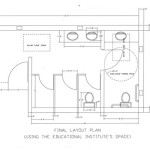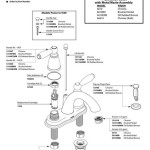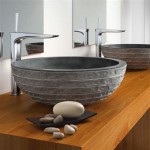11 Inch Oval Bathroom Sink Taps: A Comprehensive Guide
The 11-inch oval bathroom sink, a popular choice for its combination of style and space efficiency, often requires careful consideration when selecting the appropriate taps. The dimensions and shape of the sink influence the type of tap that will function optimally while also complementing the overall aesthetic. This article delves into the various factors to consider when choosing taps for an 11-inch oval bathroom sink, covering aspects such as tap styles, mounting options, materials, and functional considerations. Understanding these elements is crucial for achieving a bathroom design that is both visually appealing and practical for everyday use.
The selection process should begin with a clear understanding of the sink's specifications. The precise dimensions of the oval, including the length, width, and depth, are essential for determining the appropriate reach and height of the tap spout. Furthermore, the presence or absence of pre-drilled tap holes, and the number of such holes if they exist, will dictate the available mounting options. Without accurate measurements and hole configuration data, the risk of selecting unsuitable taps increases significantly, potentially leading to installation challenges and functional compromises.
Tap Styles for 11-Inch Oval Sinks
Several tap styles are compatible with 11-inch oval bathroom sinks, each offering a distinct aesthetic and functional advantage. The choice ultimately depends on personal preference, the overall bathroom design, and the existing plumbing infrastructure. The most common styles include basin mixer taps, pillar taps, wall-mounted taps, and deck-mounted taps, each characterized by specific installation requirements and operational features.
Basin mixer taps, often a favored choice for contemporary bathrooms, combine hot and cold water flow into a single spout. This design allows for precise temperature control and simplifies water delivery. They typically require a single tap hole in the sink or countertop. The spout height and reach must be carefully considered to ensure that the water stream lands appropriately within the basin of the oval sink, preventing splashing or awkward handwashing positions. Basin mixers are available in a wide variety of styles, from sleek and minimalist designs to more ornate and traditional options.
Pillar taps, a more traditional option, feature separate hot and cold water taps, each requiring its own tap hole. While offering a classic aesthetic, pillar taps can be less user-friendly than mixer taps, requiring more precise adjustment to achieve the desired water temperature. The spacing between the tap holes on the sink or countertop must align perfectly with the pillar tap set for a successful installation. Pillar taps are often chosen for period-style bathrooms or those seeking a more vintage-inspired look.
Wall-mounted taps offer a clean and minimalist look by eliminating the need for tap holes in the sink or countertop. The taps are mounted directly onto the wall, with the spout extending over the basin. This option requires careful planning during the plumbing installation phase, as the water supply lines must be routed within the wall. The correct spout projection is critical; if it’s too short, water will hit the back of the sink, and if it’s too long, it will splash. Wall-mounted taps are particularly well-suited for modern bathrooms where a streamlined aesthetic is desired.
Deck-mounted taps, as the name suggests, are mounted directly onto the countertop or deck surrounding the sink. This option provides more flexibility in terms of tap placement compared to sink-mounted taps. Deck-mounted taps can be used with sinks that do not have pre-drilled tap holes or when the existing holes are not in an ideal location. The deck thickness and material must be taken into account to ensure a secure and stable installation. Deck-mounted taps are versatile and can accommodate various tap styles, including mixer taps and pillar taps.
Material Considerations for Tap Longevity and Aesthetics
The materials used in the construction of bathroom taps significantly impact their durability, resistance to corrosion, and overall aesthetic appeal. Common materials include brass, stainless steel, chrome, and various composite materials. The selection should be based on a balance between cost, performance, and desired visual characteristics. Each material offers a unique set of advantages and disadvantages that should be carefully weighed.
Brass is a widely used material for tap bodies due to its inherent resistance to corrosion and its ability to be easily formed into complex shapes. High-quality brass taps are typically coated with a protective finish, such as chrome or nickel, to further enhance their durability and aesthetic appeal. Brass provides a solid and reliable foundation for tap construction, ensuring a long lifespan and consistent performance. The weight of a brass tap often indicates a higher quality construction.
Stainless steel is another popular choice for bathroom taps, prized for its exceptional resistance to corrosion and its modern, minimalist aesthetic. Stainless steel taps are generally more expensive than brass taps but offer a superior level of durability and resistance to staining and tarnishing. The brushed or polished finish of stainless steel provides a clean and contemporary look that complements a wide range of bathroom designs. It’s particularly suitable for environments where hygiene is a primary concern.
Chrome is a common finish applied to brass or stainless steel taps, providing a bright, reflective surface that is easy to clean and maintain. Chrome finishes are relatively inexpensive and offer good resistance to corrosion. However, chrome is susceptible to scratching and water spotting, requiring regular cleaning to maintain its luster. The reflective nature of chrome can also be a decorative element, enhancing the overall brightness of the bathroom.
Composite materials, such as engineered polymers, are increasingly being used in the construction of bathroom taps. These materials offer several advantages, including lightweight construction, resistance to corrosion, and the ability to be molded into complex shapes. Composite taps are often less expensive than brass or stainless steel taps but may not offer the same level of durability. They are suitable for applications where weight is a concern or where a specific color or texture is desired.
Functional Considerations: Water Flow and Ease of Use
Beyond aesthetics and materials, the functional aspects of bathroom taps are paramount. The water flow rate, lever design, and ease of maintenance all contribute to the overall user experience. Selecting taps that deliver an adequate flow rate while also being comfortable and intuitive to use is essential for ensuring satisfaction over the long term. Understanding the different types of aerators and flow restrictors is also crucial for optimizing water consumption.
The water flow rate of a tap is measured in liters per minute (LPM) and determines the speed at which water is delivered. A higher flow rate provides a more powerful stream, while a lower flow rate conserves water. The ideal flow rate depends on personal preference and the intended use of the sink. For general handwashing and light cleaning, a flow rate of 4-6 LPM is typically sufficient. However, for tasks such as filling a basin or washing hair, a higher flow rate may be preferred.
The lever design of a tap influences its ease of use and ergonomic comfort. Single-lever mixer taps are generally considered the most user-friendly, allowing for effortless temperature and flow control with one hand. Two-handle taps, while offering a more traditional aesthetic, require more precise adjustment to achieve the desired water temperature. The size and shape of the lever should be comfortable to grip and operate, even with wet hands. Some taps feature extended levers or touchless operation for enhanced accessibility.
Ease of maintenance is another critical consideration for bathroom taps. Taps should be designed for easy cleaning and repair, minimizing the time and effort required to keep them in optimal working condition. Look for taps with smooth, non-porous surfaces that resist staining and water spotting. Removable aerators and cartridges allow for easy cleaning and replacement, preventing the buildup of limescale and other deposits. The availability of replacement parts is also an important factor to consider, ensuring that the tap can be easily repaired if necessary.
Aerators are small devices that are fitted to the spout of a tap to mix air with water, creating a softer and more consistent stream. Aerators also help to reduce water consumption by limiting the flow rate without sacrificing water pressure. Different types of aerators are available, offering varying levels of aeration and spray patterns. Flow restrictors are devices that are installed within the tap to limit the maximum flow rate. These devices are often used in water-saving taps to conserve water without compromising performance. Selecting taps with adjustable flow restrictors allows for customization based on individual preferences and water pressure conditions.
The installation process should also be taken into account. Professional installation is often recommended to ensure proper sealing and prevent leaks. The instructions provided with the tap should be clear and comprehensive, and all necessary mounting hardware should be included. Ensure that the plumbing connections are compatible with the tap and that the water supply lines are properly flushed before connecting the tap. A properly installed tap will provide years of reliable performance and enhance the overall functionality of the bathroom.

Horow 19 11 16 In Oval Porcelain Ceramic Undermount Bathroom Sink White With Overflow Drain Hr R5040d The Home Depot

Aquaterior Oval Bathroom Vessel Sink Tempered Glass Vanity Above Counter Top Mount Basin Com

Horow 19 11 16 In Oval Porcelain Ceramic Undermount Bathroom Sink White With Overflow Drain Hr R5040d The Home Depot

Scarabeo 8205 By Nameek S Zefiro Oval Shaped White Ceramic Wall Mounted Or Vessel Sink Thebath

Scarabeo 8093 Bathroom Sink Seventy Collection Nameek S

Kohler Bryant Oval Drop In Vitreous China Bathroom Sink Biscuit With Overflow Drain K 2699 4 96 The Home Depot

Deervalley Dv 1u302 17 X 14 White Oval Vitreous China Undermount Bathroom Sink With Overflow Hole Com

Puluomis Bathroom Sink Combo Set Tempered Glass Basin Hand Painting Washbowl With Chrome Tap Waste Water Supply Lines Silver

Terrazzo 14 Inch Oval Bathroom Sink

Cheviot 1102 Wh 17 1 8 Inch Mini Oval Drop In Basin White
Related Posts







